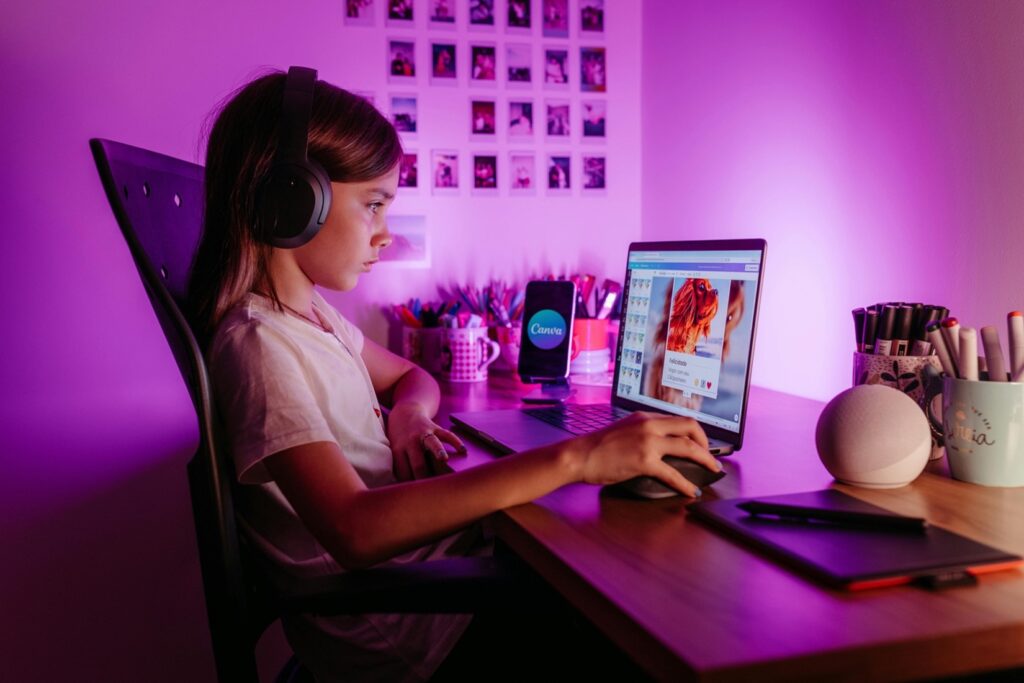Are you among those who cannot understand the attraction of so-called social videos? Well, they do have a following, a big following. But if you are looking for Oscar-worthy content, in all likelihood, social video is not that.
“Come on Barry, you’re good at this sort of stuff. Think of something.” – Nathan, “Misfits,” Clerkenwell Films, 2012
A few weeks ago, we walked into the family room and our daughter was watching a bunch of YouTube videos and we said, “Whaaaa?”The daughter’s response, with pouty eyes, was, “But dad!”
Professionally, we understand the reasons for video social media’s (YouTube, Instagram, Snapchat, TikTok, etc.) existence—finding information, staying in touch with friends/family, news, music, product info, how-to pieces, and more. Thanks to the build-out of the wired/wireless Internet everywhere, more than 5 billion out of 8 billion-plus men/women, young/old, are on social media regularly. Social media has always been a great marketing tool and opportunity for promoting products, services, and, in recent years, movies and shows.
After all, 95% of people ages 16–64 is on social media frequently or regularly, and the social media services like YouTube (thanks, Google) and TikTok (thanks, ByteDance—at least for now) have tons of data on individuals, habits, likes/dislikes, etc. to help individuals and organizations shape and target their messages to be measurably effective.
Don’t take our word for it, check out Datareportal’s global annual report. It’s like the road map. Yes, map apps are a big use category all by themselves to reach audiences in countries around the globe, at specific times and on the screen they most commonly use. According to audience research firm GWI, the typical social media user spends (wastes) nearly 2.5 hours a day on social media. Ninety-seven percent use it for social networking, messaging; 94.7% use the chat apps, 94.3% said they used… something (shopping, general search, location/parking, staying in touch, finding stuff, killing time, games—lots of games). Oh, and work.
Yes, social media is also a good place to go to check out what’s playing at the theater, what day/time a new reality show is going to be on TV, or what new miniseries is going to be on one of your streaming services that you want to watch before they cancel it.
That’s all cool. But we draw the line on it being the place we’re going for real entertainment. Sorry, we just can’t buy into the idea, although it’s where all the cool kids gather to pimp/promote stuff they “just discovered.”
YouTube and TikTok both have a treasure trove of influencers, which can be paid to promote products and services. Cost depends on the number of followers they have and “other” factors. We admit right at the outset, we’re not big influencer fans, but there are a lot of brands that swear the long, flowing hair, megawatt smiles, and folks who make things look interesting and fun must be effective.
Historically, celebrities and actors found the well-paying gigs were a great way to stay in front of their audiences as well as retain their visibility with directors, showrunners, and project/studio executives. But, at some point, online influencers gained a following and audience, and it became difficult to know when they actually discovered something and when they were merely being paid to promote it.
Fortunately, after years of pure chaos, governments around the world established guidelines that said they had to advise viewers they were really advertising the product, and Gen Zers had to figure out for themselves if it was something they really wanted/needed or it was something they bought just because she/he recommended it.

But, there are folks like Nathan Apodaca, who liked to make short TikTok videos of themselves skateboarding.
Then, Apodaca enhanced his videos by drinking Ocean Spray cranberry juice while singing along to Fleetwood Mac’s “Dreams.” Someone at Ocean Spray got wind of it, and he received a boat load of cranberry juice and a modest sum for his efforts. In addition, he received a guest spot on the show Reservation Dogs, getting more than just his 15 minutes of online fame.
Today’s influencers come in all shapes, sizes, sexes, races, audience sizes, and prices; yet, we really wouldn’t include them in any of our entertainment categories.
Back in the days when the creator economy was just getting started, Jim Louderback oversaw the growth and direction of VidCon, which helped hundreds/thousands of people of all ages gain an understanding of how they could get their foot in the door to become a video entrepreneur. However, he also stressed that just as in the professional entertainment industry, there are tiers to go through and that an overnight success might be many years in the making, while staying there takes a lot of perseverance, time, and attention to details.
Still, that never stops folks from trying to become digital-native celebrities. Social media video creators have a wide range of ways they can make a meaningful to great income including sponsors, subscriptions, and a steady stream of new, interesting content to keep viewers coming back for more. During Hollywood’s dual strikes that shut down everything last year, many of those folks thought it was an excellent opportunity to show their creativity. However, SAG-AFTRA warned influencers and social media video folks that producing/launching new projects during their strike could effectively bar them from moving up and into the film/show industry.
Beyond this segment, there’s a growing group of folks we’ll call the gig creator industry—professionals who are working to continue to hone and refine their talents/expertise and supplement their incomes with the downturn in new shows and movies. At the same time, there’s a new crowd of talented and not-so-talented folks who find it financially rewarding to do stuff people find interesting, fun, and, yes, dumb and profitable. Both of those categories are fighting for audience share on social video.
We’re not really disparaging them because, obviously, they’re interesting to some people, especially Gen Alpha/Z folks. It’s just that there is a difference, even in this category, between professionals and people who are learning as they go. YouTube tried its hand at professional content several times in recent years with its YouTube Originals, putting serious money into comedies, dramas, reality shows, and docuseries. Each time, they pulled the plug because the commissioned projects were drawing “less than spectacular“ audience numbers, while their low-investment, low-risk videos were increasingly popular to their target audiences.
Sometimes the videos click with the audience, and sometimes they come up a little short. It doesn’t matter much to YouTube, TikTok, Instagram, Snapchat, and others because the rewards only accrue to the creators when they attract eyeballs and advertisers.
Over the last three years, YouTube has paid its creators a reported $70 billion for their content, but that was after they took their share of the ad income—without any of the financial risk. A helluva business… for YouTube! Of course, that was something Louderback continually emphasized to VidCon attendees. Most would invest a lot of time and money for the momentary interest and recognition they generated, while a few would accumulate a lot of follower attention and a good to fantastic payday.
Guess which group YouTube, Instagram, TikTok, and the others talk up? Yeah: The social video folks like to say their creators are better at predicting what the services’s audience wants, which they like to call “TV for the new generation.”

But, is it really TV (entertainment) or a convenient time filler? With social video, you’re faced with a major oversupply and, therefore, a devaluation of the content, with a few folks (and their content) rising to the top. The vast majority is a waste of time, money, effort, and, ultimately, Internet bandwidth. There’s a huge difference between a hobby and dreams of being in the big time with a professionally developed/produced video story. To compare them as equals does a disservice to everyone.
Frankly, we feel there is a wide difference between social video and professional content, and to compare them as equals in the streaming video arena is….
We admit that YouTube has a large and expansive audience. The streamer has accounted for nearly 10% of viewing time. The company says it has more than 150 million people in the US watching YouTube, compared to Netflix’s 84 million-plus subscribers but with 17% fewer viewing minutes during the first half of the year. In addition, their investment in content, $20 million, is money paid to folks after they have delivered content, it’s been put online, and ad dollars have been received and the checks cashed.
Part (much?) of that viewing includes stunts, music videos, shorts, and animal videos. According to YouTube, about 450 million hours of content are uploaded every hour, with the average viewer spending more than 48 minutes on YouTube (88% on mobile devices) that are 2–3 minutes in length. A lot of that viewing is done on the go, in-between meetings/classes and times when you want to watch “something” without really seeing it, to keep your mind mildly active or at least not venturing too far.

A big part of the problem is we’re in the midst of a major upheaval of entertainment. Everyone is trying to be on top and make a buck, while measurement companies are trying to figure out how to quantify/qualify the new arena. Content measurement organizations are finding it difficult to actually measure the viewer value and difference between short videos and 30- to 60-plus-minute video stories as well as the interest level and value to the consumer.
Netflix started it all by saying people were watching tens of thousands of minutes of a show, and, therefore, it was huge. But, no onewatches a few minutes of a Netflix movie/show, switches to another, goes over to Disney+ and watches a few minutes of their stuff, then does the same thing at Amazon Prime and Apple TV+.
That’s not watching entertainment. That’s someone’s excuse for exercise. Or, it’s someone skimming over shows/movies until they find something they like or settle on.
Sure, they’ll watch a video on how to reset their alarm system, a few folks doing dumb tricks or risky stuff, several segments of George Carlin’s old shows (how we love that stuff), and even trailers on shows/movies to see if they’re interested in watching them on one of their entertainment services. So, rather than taking stock in Nielsen’s numbers (and yes, they are really, really trying), a more meaningful insight could be TVision’s work that studies viewer engagement across devices, apps, networks, shows, and ads.
They’ve found that shorter YouTube videos have pretty high attention rates, and compilation videos, such as a bunch of TikTok clips or Carlin’s (or pick your fave comedian’s top jokes/stage appearances) score well. That’s probably why they reported that YouTube ranks dead last when it comes to real attention in following the action, activity, story flow. After all, movies and TV shows retain viewer attention a lot longer than jumping from one social media video piece to another.
Sure, we know YouTube’s boss, Neal Mohan, sent a letter to the Academy arguing that the services creators and their projects should be considered for Oscars. First, we’re not sure how many are card-carrying members (don’t really care to know) and how many jumped into the creator thing because it looked like fun and a great way to make a living. Then they improved their efforts and projects as they went along, since it was their investment, and they only got paid when YouTube got paid. That’s “a little” different from a real creative project, even indie films, that has a team of people who conceptualize, write, create, produce, and post the film/show, and then roll the dice to get the video story in theaters, slotted by a network or added to a streamer’s library to watch not just a couple of minutes, but 30, 60, 90, 120 minutes. And if parts of the audience are like Ted Sarandos’ son, who happened to watched Lawrence of Arabia on his iPhone, that’s okay.
It’s part of the new way people consume movies/shows, but it’s a creative video story, not a 2- to 10-minute YouTube creator project. Recognizing the difference, that’s why Nathan Young inMisfits, advised, “Best you keep that kinda thing between you and your Internet service provider.”
Our daughter may continue to watch her social video stuff on the big screen, but that doesn’t really make it real content entertainment. There’s a major difference between the creator economy and creative industry, but consumers will think of them as the same but different video entertainment.